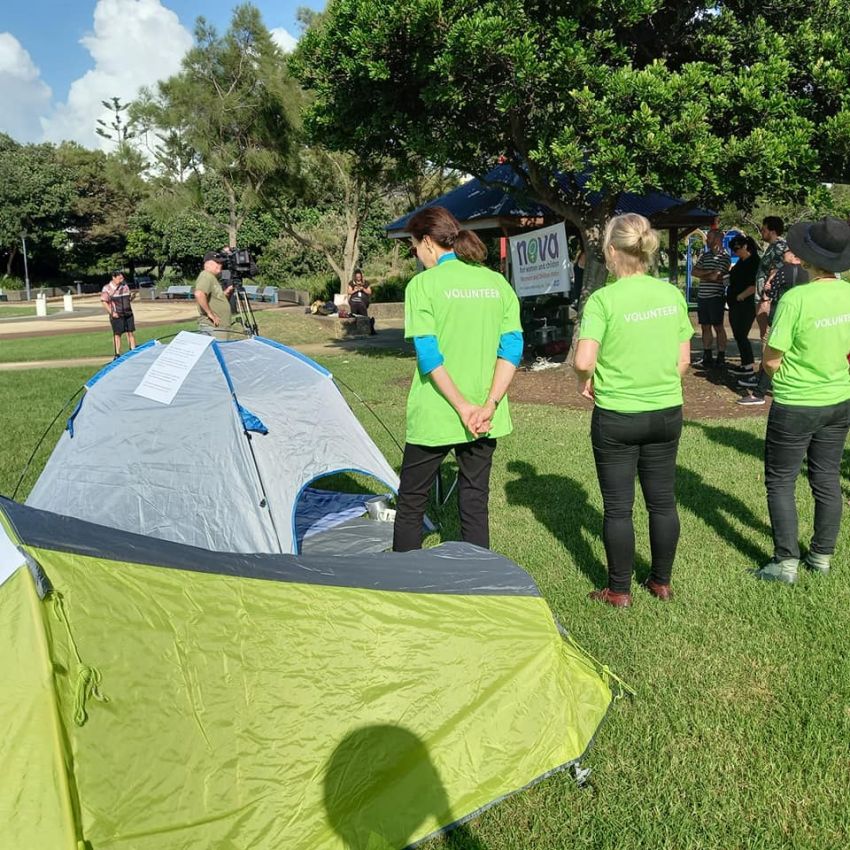
Kelly Hansen, CEO of NOVA, a Newcastle-based accommodation service for women and children, believes homelessness is an emerging humanitarian crisis.
Launching a “tent city” in Foreshore Park on March 29 to highlight the problem, Hansen said the current housing crisis was foreseen.
NOVA initiated the action with other agencies from Newcastle, Lake Macquarie, Port Stephens and Maitland.
A report commissioned by the Australian Council of Social Services from Equity Economics found last year that poverty and homelessness would become the “new pandemic”, affecting both those surviving on Centrelink payments and low incomes but also the middle class.
Given this, it is not surprising to see whole families living in cars and tents, couch surfing, sleeping rough, enduring overcrowded conditions or remaining in domestic and family violence situations.
Hansen said that NOVA, just one of many specialist homelessness services in the Hunter, has at least nine women on a waiting list for crisis accommodation.
In February, 88 women were waiting to be assessed for a rapid response, and the crisis accommodation service was taking 4 to 5 people daily.
Hansen said that NOVA has no crisis accommodation available now and those seeking assistance often do not qualify for Temporary Accommodation (TA) or have reached the 28-day limit.
“If we can’t provide a temporary roof for those seeking assistance, we at least try to provide [people with] access to laundry facilities, blankets, showers, toiletries, food and a place to rest for the day.
“We can also help people develop a plan to keep safe at night and facilitate contact with the kids if being forced to say sleep in a car means families become separated.”
Hansen said that while these sorts of services are important, they do not address the structural causes of homelessness — pervasive poverty and the gendered inequality that places women at risk of homelessness.
The Newcastle “tent city” was planned as a Call to Action to fix these structural problems.
Hansen contends that the New South Wales government could expand the TA budget, extend the 28-day limit on TA, reimpose the moratorium on evictions and stop the rise of no grounds evictions.
Most importantly, she said, it could start to build the 500,000 public housing units that NSW needs to address people’s housing needs.
The failure of the private housing market is being shown up by skyrocketing rentals, with 60 or more people turning up for rental inspections and long-term rental properties becoming more lucrative as Air B&Bs.
This failure is further distorted by people leaving cities to head to the regions, who can offer higher rents as well as rent in advance.
Hansen believes that Anglicare’s next Rental Affordability Snapshot may well show zero affordability for low income earners and Centrelink recipients.
Hansen said the federal government could stimulate regional economies and jobs by helping provide long-term affordable housing. Instead, it is promoting its “dob in a bludger” hotline with a meaningless increase to JobSeeker.
Service providers, such as NOVA, are attempting to address complex issues with band-aid solutions which do not fix the structural problems of people affected by homelessness, said Hansen.